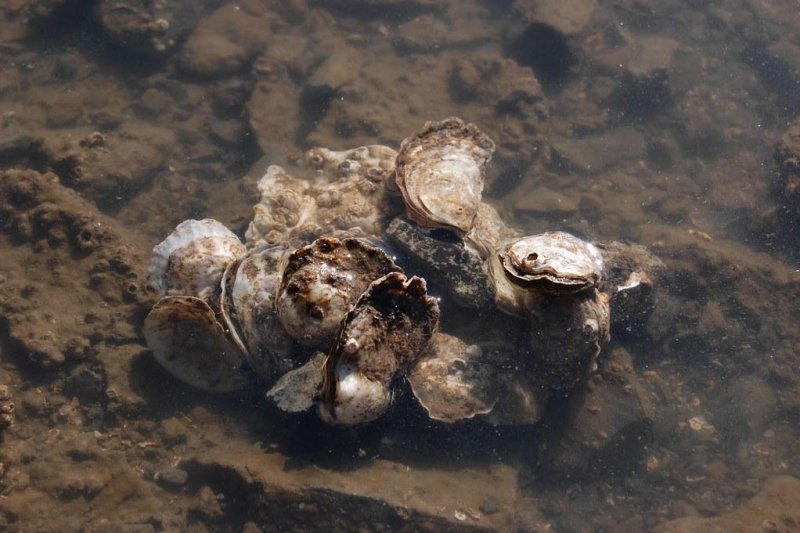Oysters and clams along the Pacific Coast are being found with significant amounts of microplastic pollution inside. Photo by OSU/
Flickr
Nov. 12 (UPI) -- Microplastics are showing up inside clams and oysters on the coast of the Pacific Northwest. New research out of Oregon suggests the majority of the pollution inside bivalves is comprised of microthreads.
Synthetic threads are used in a variety of products, but they're especially common in pieces of recreational clothing -- fleece jackets, yoga pants and other forms of outerwear and athletic gear.
"These microfilaments can be shed from clothing, up to 700,000 per load of laundry," Britta Baechler, a doctoral student at Portland State University in Oregon, said in a news release. "Those particles then travel out through greywater into wastewater and to the coast."
For the new study, published this week in the journal Limnology and Oceanography Letters, scientists collected dozens of Pacific oysters and razor clams at 15 sample sites along the Oregon coast. Of the 300 organisms sampled, just two were free of microplastics. Scientists found an average of 11 pieces of microplastic in oysters and nine in clams. The majority of the plastic pollution was made up of microthreads.
Oysters collected in the spring featured higher concentrations of microplastics. Scientists can't be certain what accounts for the seasonal discrepancy, but it may reflect the fact that during the spring, clothing featuring microthreads is more prevalent and precipitation, which washes pollution into the ocean, is more plentiful.
Commercial fishers and oyster farmers are often blamed for the microplastic pollution found in mollusks, but the authors of the latest study suggest there's no evidence of such a connection.
"It's not because people aren't managing our fisheries well or are being unclean in their practices," Granek said. "We're all using plastics on a daily basis. We are all the source of contamination in our seafood. And microplastics are not just in our seafood. We know that they are in our beer, in our salt, in our drinking water."
Previous studies suggest microplastic pollution can yield reproductive and growth impairments among oyster and clam populations -- impacts that could yield broader ecological consequences.
The study's authors hope their findings will inspire efforts to curtail microplastic pollution. Engineers are currently working on filters to prevent microplastics from being flushed from washing machines, but it's not clear whether the technology will work or be economical.
The research adds to the growing body of evidence that there are very few ecosystems or species that remain unaffected by microplastic pollution. Scientists have found worrisome amounts of plastics in species of all shapes and sizes. Microplastics have been recovered from the deep sea and the peaks of the Alps.
"Whether it was a fairly urban site or a rural site, estuary or open-coast beach, both species had microplastics," said Granek. "Although we think of the Oregon coast as a much more pristine coastline compared to California, Puget Sound or the Eastern Seaboard, when we are talking about microplastics, we're still seeing that human footprint on even our more pristine coastline."















